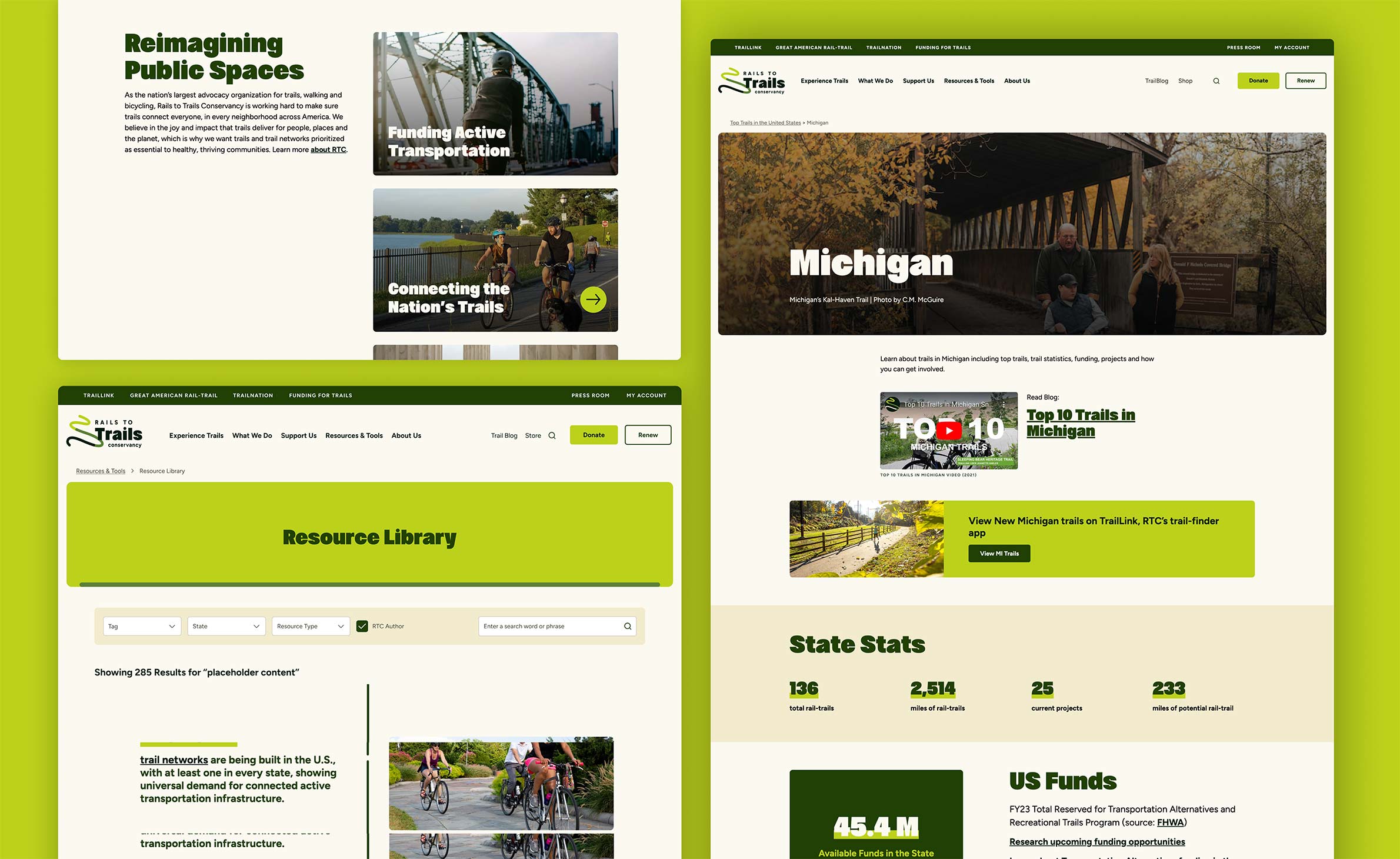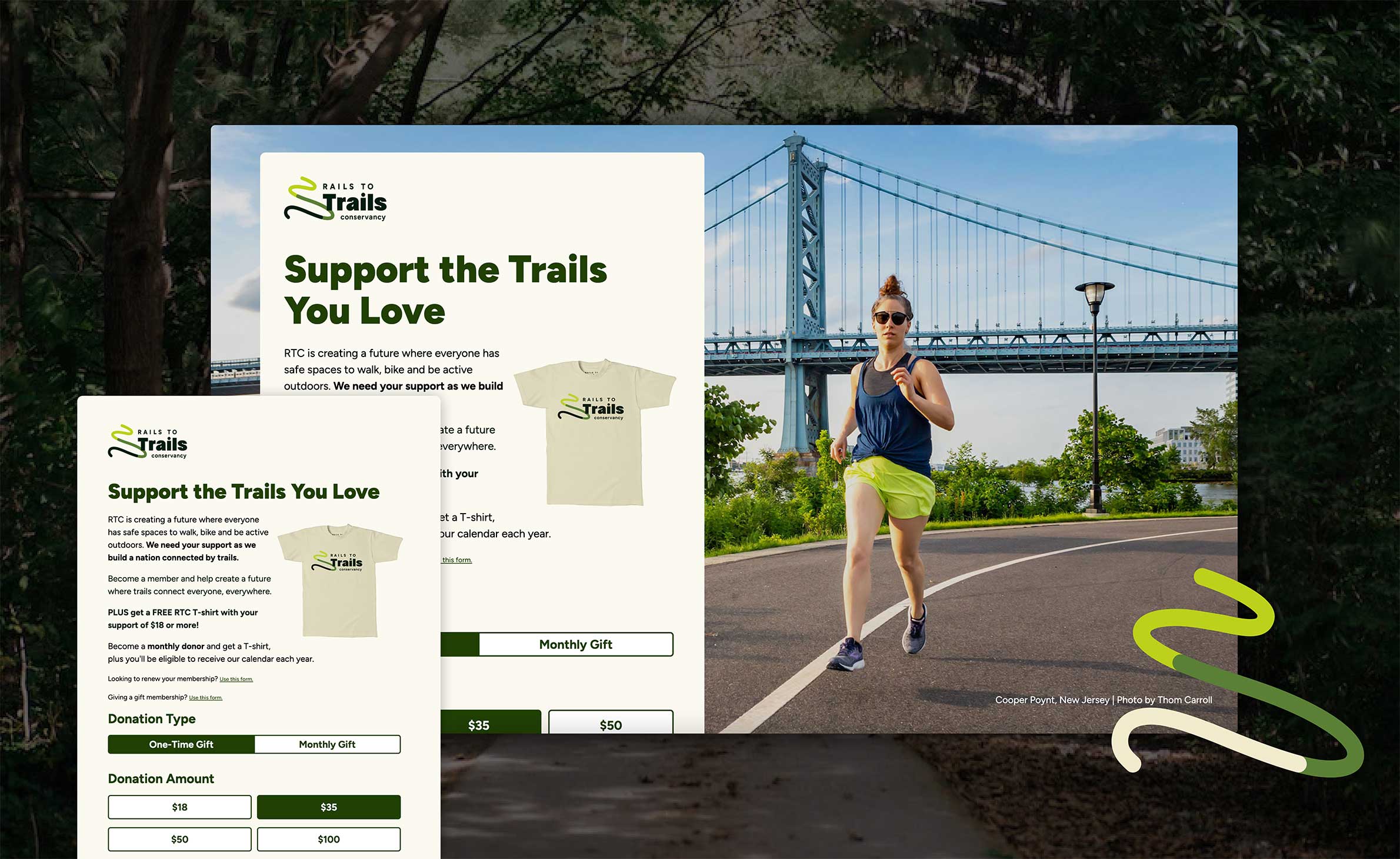A New Visual Identity Becomes a Fresh Website Experience
What We Did
- UX & Visual Design
- Website Development
Tools & Tech
- WordPress
increase in revenue YoY
increase in organic traffic
Rails to Trails Conservancy recently expanded their mission from focusing on rail trails (public hiking trails that run alongside railroad lines) to the broader goal of advocating for community and environmental well-being. On the heels of a new visual identity that reflected this expanded mission, we were tasked with developing a new website to showcase how trails improve the communities they run through, and engage site visitors more meaningfully.
Like a day outside
Rails to Trails’ new brand identity was crafted by Outright to express the joy of a beautiful day outside. When translating the brand to a new website, we found ways to reinforce brand language, celebrate the magic of the outdoors, and express how communities benefit from sharing these spaces. Prominent use of video footage throughout the site captures the dynamic experience of being on trails and the diversity of the communities that use them. And large-scale photographs keep real communities and natural environments at the forefront as visitors explore.


Key challenges
Previously, pages with high organic traffic that catered to recreational trail users did not explain the organization’s work, expertise, or impact, nor did these pages leverage CTAs. In reviewing analytics data, we identified missed opportunities to capture substantial audiences that were visiting the site.
We also found that the previous site was not optimized for multiple audiences, which each need different information. Advocates, professionals, and recreational trail users were all accessing the site, but the content relevant to each audience was convoluted and hard to find.
The previous site did not effectively communicate how Rails to Trails advances safe and active transportation, nor did it declare its expertise in advocacy, policy, and development. Most site visitors incorrectly assumed that the organization simply builds and manages trails.
Finally, we found that two different sites run by the organization (RailsToTrails.org and TrailLink.com) were competing for audiences and donations due to a lack of clarity about the distinction between them.

Effective and purposeful solutions
On the new site, we identified high-traffic pages and incorporated content that showcased Rails to Trails’ impact, funding information, and stories, while also providing visitors with ways to donate and support the organization’s work using strategic CTAs.
We developed a new navigation system that matches the specific intent of each audience. All links that relate to recreational trail use are within the “Experience Trails” menu, making it easier for visitors to find what they’re looking for.
Engagement rate improved slightly by 2.58%, & bounce rate decreased by 8.92%, suggesting better quality traffic post-redesign YoY.
The new homepage features clear statements, impactful imagery, and attention-grabbing UI behavior to immediately convey what’s most important to know and do on the site. A new “What We Do” section clearly defines organizational focus areas, which now include comprehensive descriptions and related news, stories, resources, and links to sub-topic pages.
And now, the site prioritizes trail usage content while introducing the narrative around advocacy, and new, clear pathways to TrailLink.com delineate the different purposes of the two sites.

